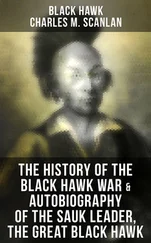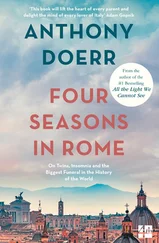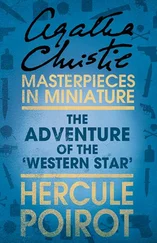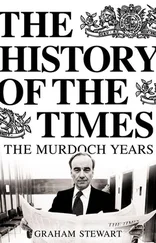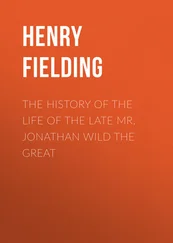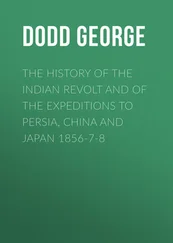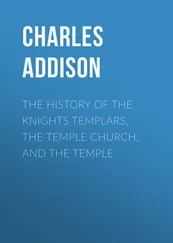Edward Dickinson - Music in the History of the Western Church
Здесь есть возможность читать онлайн «Edward Dickinson - Music in the History of the Western Church» — ознакомительный отрывок электронной книги совершенно бесплатно, а после прочтения отрывка купить полную версию. В некоторых случаях можно слушать аудио, скачать через торрент в формате fb2 и присутствует краткое содержание. Жанр: foreign_antique, foreign_prose, на английском языке. Описание произведения, (предисловие) а так же отзывы посетителей доступны на портале библиотеки ЛибКат.
- Название:Music in the History of the Western Church
- Автор:
- Жанр:
- Год:неизвестен
- ISBN:нет данных
- Рейтинг книги:4 / 5. Голосов: 1
-
Избранное:Добавить в избранное
- Отзывы:
-
Ваша оценка:
- 80
- 1
- 2
- 3
- 4
- 5
Music in the History of the Western Church: краткое содержание, описание и аннотация
Предлагаем к чтению аннотацию, описание, краткое содержание или предисловие (зависит от того, что написал сам автор книги «Music in the History of the Western Church»). Если вы не нашли необходимую информацию о книге — напишите в комментариях, мы постараемся отыскать её.
Music in the History of the Western Church — читать онлайн ознакомительный отрывок
Ниже представлен текст книги, разбитый по страницам. Система сохранения места последней прочитанной страницы, позволяет с удобством читать онлайн бесплатно книгу «Music in the History of the Western Church», без необходимости каждый раз заново искать на чём Вы остановились. Поставьте закладку, и сможете в любой момент перейти на страницу, на которой закончили чтение.
Интервал:
Закладка:
After the Exodus other instruments, perhaps derived from Egypt, make their appearance: the shophar , or curved tube of metal or ram’s horn, heard amid the smoke and thunderings of Mt. Sinai, 12 12 Ex. xix.
and to whose sound the walls of Jericho were overthrown; 13 13 Jos. vi.
the hazozerah , or long silver tube, used in the desert for announcing the time for breaking camp, 14 14 Num. x. 2-8.
and employed later by the priests in religious service, 15 15 2 Chron. v. 12, 13; xxix. 26-28.
popular gatherings, and sometimes in war. 16 16 2 Chron. xiii. 12, 14.
The nebel was either a harp somewhat larger than the kinnor , or possibly a sort of guitar. The chalil , translated in the English version “pipe,” may have been a sort of oboe or flageolet. The band of prophets met by Saul advanced to the sound of nebel, toph, chalil , and kinnor . 17 17 1 Sam. x. 5.
The word “psaltery,” which frequently appears in the English version of the psalms, is sometimes the nebel , sometimes the kinnor , sometimes the asor , which was a species of nebel . The “instrument of ten strings” was also the nebel or asor . Percussion instruments, such as the drum, cymbals, bell, and the Egyptian sistrum (which consisted of a small frame of bronze into which three or four metal bars were loosely inserted, producing a jingling noise when shaken), were also in common use. In the Old Testament there are about thirteen instruments mentioned as known to the Hebrews, not including those mentioned in Dan. iii., whose names, according to Chappell, are not derived from Hebrew roots. 18 18 Chappell, History of Music , Introduction.
All of these were simple and rude, yet considerably varied in character, representing the three classes into which instruments, the world over, are divided, viz. , stringed instruments, wind instruments, and instruments of percussion. 19 19 For extended descriptions of ancient musical instruments the reader is referred to Chappell, History of Music ; Engel, The Music of the Most Ancient Nations ; and Stainer, The Music of the Bible .
Although instruments of music had a prominent place in public festivities, social gatherings, and private recreation, far more important was their use in connection with religious ceremony. As the Hebrew nation increased in power, and as their conquests became permanently secured, so the arts of peace developed in greater profusion and refinement, and with them the embellishments of the liturgical worship became more highly organized. With the capture of Jerusalem and the establishment of the royal residence within its ramparts, the worship of Jehovah increased in splendor; the love of pomp and display, which was characteristic of David, and still more of his luxurious son Solomon, was manifest in the imposing rites and ceremonies that were organized to the honor of the people’s God. The epoch of these two rulers was that in which the national force was in the flower of its youthful vigor, the national pride had been stimulated by continual triumphs, the long period of struggle and fear had been succeeded by glorious peace. The barbaric splendor of religious service and festal pageant was the natural expression of popular joy and self-confidence. In all these ebullitions of national feeling, choral and instrumental music on the most brilliant and massive scale held a conspicuous place. The description of the long series of public rejoicings, culminating in the dedication of Solomon’s temple, begins with the transportation of the ark of the Lord from Gibeah, when “David and all the house of Israel played before the Lord with all manner of instruments made of fir-wood, and with harps ( kinnor ), and with psalteries ( nebel ), and with timbrels ( toph ), with castanets ( sistrum ), and with cymbals ( tzeltzelim ).” 20 20 2 Sam. vi. 5.
And again, when the ark was brought from the house of Obed-edom into the city of David, the king danced “with all his might,” and the ark was brought up “with shouting and with the sound of a trumpet.” 21 21 2 Sam. vi. 14, 15.
Singers were marshalled under leaders and supported by bands of instruments. The ode ascribed to David was given to Asaph as chief of the choir of Levites; Asaph beat the time with cymbals, and the royal paean was chanted by masses of chosen singers to the accompaniment of harps, lyres, and trumpets. 22 22 1 Chron. xvi. 5, 6.
In the organization of the temple service no detail received more careful attention than the vocal and instrumental music. We read that four thousand Levites were appointed to praise the Lord with instruments. 23 23 1 Chron. xxiii. 5.
There were also two hundred and eighty-eight skilled singers who sang to instrumental accompaniment beside the altar. 24 24 1 Chron. xxv.; 2 Chron. v. 12. See also 2 Chron. v. 11-14.
The function performed by instruments in the temple service is also indicated in the account of the reëstablishment of the worship of Jehovah by Hezekiah according to the institutions of David and Solomon. With the burnt offering the song of praise was uplifted to the accompaniment of the “instruments of David,” the singers intoned the psalm and the trumpets sounded, and this continued until the sacrifice was consumed. When the rite was ended a hymn of praise was sung by the Levites, while the king and the people bowed themselves. 25 25 2 Chron. xxix. 25-30.
With the erection of the second temple after the return from the Babylonian exile, the liturgical service was restored, although not with its pristine magnificence. Ezra narrates: “When the builders laid the foundation of the temple of the Lord, they set the priests in their apparel with trumpets, and the Levites the sons of Asaph with cymbals, to praise the Lord, after the order of David king of Israel. And they sang one to another in praising and giving thanks unto the Lord, saying, For he is good, for his mercy endureth forever toward Israel.” 26 26 Ezra iii. 10, 11.
And at the dedication of the wall of Jerusalem, as recorded by Nehemiah, instrumentalists and singers assembled in large numbers, to lead the multitude in rendering praise and thanks to Jehovah. 27 27 Neh. xii.
Instruments were evidently employed in independent flourishes and signals, as well as in accompanying the singers. The trumpets were used only in the interludes; the pipes and stringed instruments strengthened the voice parts; the cymbals were used by the leader of the chorus to mark the rhythm.
Notwithstanding the prominence of instruments in all observances of public and private life, they were always looked upon as accessory to song. Dramatic poetry was known to the Hebrews, as indicated by such compositions as the Book of Job and the Song of Songs. No complete epic has come down to us, but certain allusions in the Pentateuch, such as the mention in Numbers xxi. 14 of the “book of the wars of Jehovah,” would tend to show that this people possessed a collection of ballads which, taken together, would properly constitute a national epic. But whether lyric, epic, or dramatic, the Hebrew poetry was delivered, according to the universal custom of ancient nations, not in the speaking voice, but in musical tone. The minstrel poet, it has been said, was the type of the race. Lyric poetry may be divided into two classes: first, that which is the expression of individual, subjective feeling, the poet communing with himself alone, imparting to his thought a color derived solely from his personal inward experience; and second, that which utters sentiments that are shared by an organization, community, or race, the poet serving as the mouthpiece of a mass actuated by common experiences and motives. The second class is more characteristic of a people in the earlier stages of culture, when the individual is lost in the community, before the tendency towards specialization of interests gives rise to an expression that is distinctly personal. In all the world’s literature the Hebrew psalms are the most splendid examples of this second order of lyric poetry; and although we find in them many instances in which an isolated, purely subjective experience finds a voice, yet in all of them the same view of the universe, the same conception of the relation of man to his Creator, the same broad and distinctively national consciousness, control their thought and their diction. And there are very few even of the first class which a Hebrew of earnest piety, searching his own heart, could not adopt as the fitting declaration of his need and assurance.
Читать дальшеИнтервал:
Закладка:
Похожие книги на «Music in the History of the Western Church»
Представляем Вашему вниманию похожие книги на «Music in the History of the Western Church» списком для выбора. Мы отобрали схожую по названию и смыслу литературу в надежде предоставить читателям больше вариантов отыскать новые, интересные, ещё непрочитанные произведения.
Обсуждение, отзывы о книге «Music in the History of the Western Church» и просто собственные мнения читателей. Оставьте ваши комментарии, напишите, что Вы думаете о произведении, его смысле или главных героях. Укажите что конкретно понравилось, а что нет, и почему Вы так считаете.


